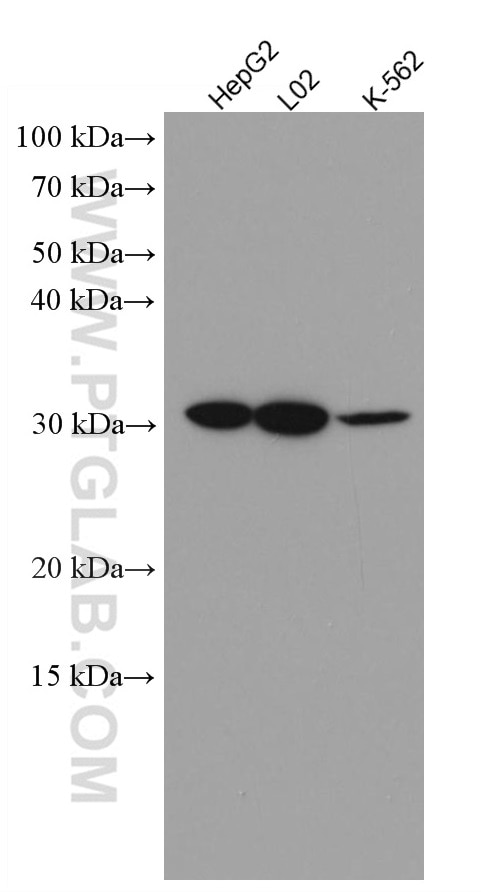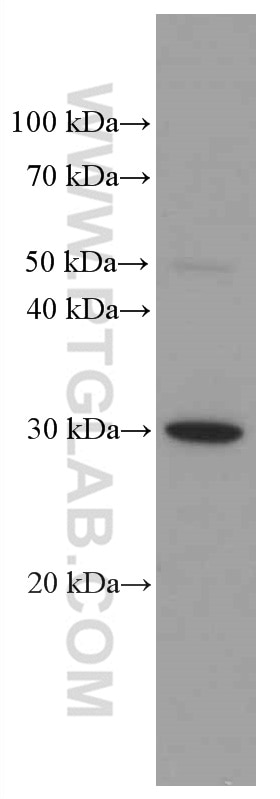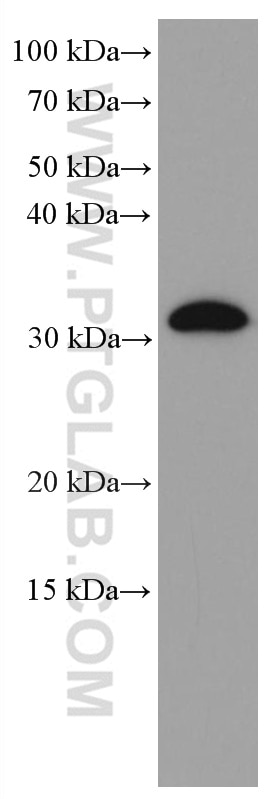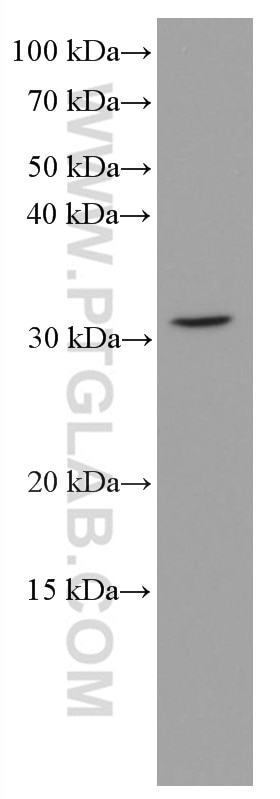Validation Data Gallery
Tested Applications
| Positive WB detected in | HepG2 cells, HeLa cells, Jurkat cells, NIH/3T3 cells, L02 cells, K-562 cells |
Recommended dilution
| Application | Dilution |
|---|---|
| Western Blot (WB) | WB : 1:1000-1:6000 |
| It is recommended that this reagent should be titrated in each testing system to obtain optimal results. | |
| Sample-dependent, Check data in validation data gallery. | |
Published Applications
| KD/KO | See 1 publications below |
| WB | See 27 publications below |
| IHC | See 4 publications below |
| IP | See 1 publications below |
| CoIP | See 3 publications below |
Product Information
66525-1-Ig targets HMGB1 in WB, IHC, IP, CoIP, ELISA applications and shows reactivity with human, mouse samples.
| Tested Reactivity | human, mouse |
| Cited Reactivity | human, mouse, rat |
| Host / Isotype | Mouse / IgG1 |
| Class | Monoclonal |
| Type | Antibody |
| Immunogen | HMGB1 fusion protein Ag1264 相同性解析による交差性が予測される生物種 |
| Full Name | high-mobility group box 1 |
| Calculated molecular weight | 25 kDa |
| Observed molecular weight | 30 kDa |
| GenBank accession number | BC003378 |
| Gene Symbol | HMGB1 |
| Gene ID (NCBI) | 3146 |
| RRID | AB_2881888 |
| Conjugate | Unconjugated |
| Form | Liquid |
| Purification Method | Protein A purification |
| UNIPROT ID | P09429 |
| Storage Buffer | PBS with 0.02% sodium azide and 50% glycerol , pH 7.3 |
| Storage Conditions | Store at -20°C. Stable for one year after shipment. Aliquoting is unnecessary for -20oC storage. |
Background Information
The HMG (high mobility group) proteins are nonhistone chromosomal proteins that is present in almost all eukaryotic cells, and it functions to stabilize NUCLEOSOME formation and acts as a transcription-factor-like protein that regulates the expression of several genes[PMID: 18160415]. Once injury, infection or other inflammatory stimuli, activated macrophages, mature dendritic cells and natural killer cells can secret HMGB1, which act as a crucial cytokine[PMID: 20163887]. HMGB1 also involved in V(D)J recombination by acting as a cofactor of the RAG complex, stimulating cleavage and RAG protein binding at the 23 bp spacer of conserved recombination signal sequences (RSS)[PMID: 19360789 ]. Act as a Heparin-binding protein that has a role in the extension of neurite-type cytoplasmic processes in developing cells. HMGB1 (high mobility group box 1) modulates gene expression in the nucleus, but certain immune cells secrete HMGB1 as an extracellular Alarmin to signal tissue damage.The nuclear HMGB1 relocalizes to the extracellular milieu in senescent human and mouse cells in culture and in vivo, which stimulated cytokine secretion through TLR-4 signaling (23649808).This antibody is raised against full length HMGB1 of human origin. The monomeric HMGB1 is 29 kDa and dimer is 58 kDa.
Protocols
| Product Specific Protocols | |
|---|---|
| WB protocol for HMGB1 antibody 66525-1-Ig | Download protocol |
| Standard Protocols | |
|---|---|
| Click here to view our Standard Protocols |
Publications
| Species | Application | Title |
|---|---|---|
Nat Microbiol Chloroquine ameliorates carbon tetrachloride-induced acute liver injury in mice via the concomitant inhibition of inflammation and induction of apoptosis | ||
Adv Healthc Mater Anti-PD-L1 DNAzyme Loaded Photothermal Mn 2+ /Fe 3+ Hybrid Metal-Phenolic Networks for Cyclically Amplified Tumor Ferroptosis-Immunotherapy | ||
J Control Release Enhancing cell pyroptosis with biomimetic nanoparticles for melanoma chemo-immunotherapy | ||
ACS Appl Mater Interfaces Cascade-Responsive Hierarchical Nanosystems for Multisite Specific Drug Exposure and Boosted Chemoimmunotherapy | ||
J Nanobiotechnology Glioma-targeted oxaliplatin/ferritin clathrate reversing the immunosuppressive microenvironment through hijacking Fe2+ and boosting Fenton reaction | ||
Redox Biol Mecheliolide elicits ROS-mediated ERS driven immunogenic cell death in hepatocellular carcinoma. |



